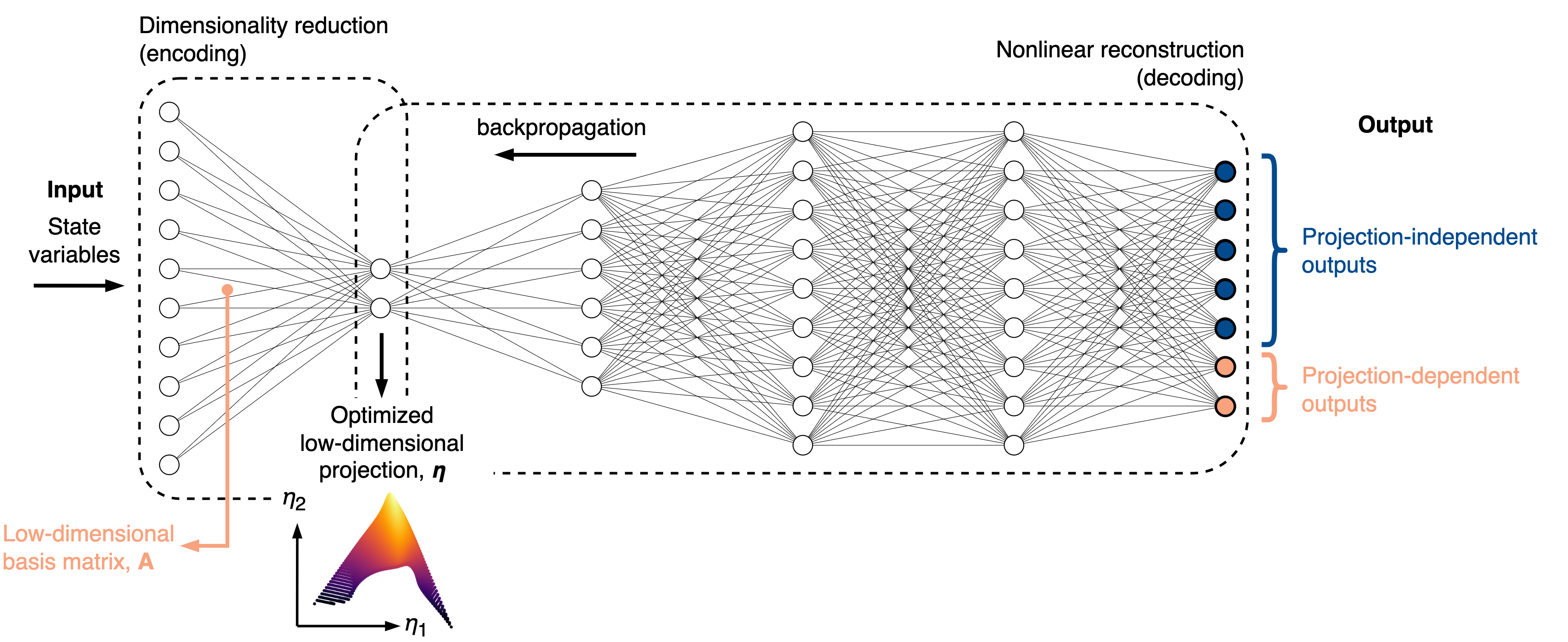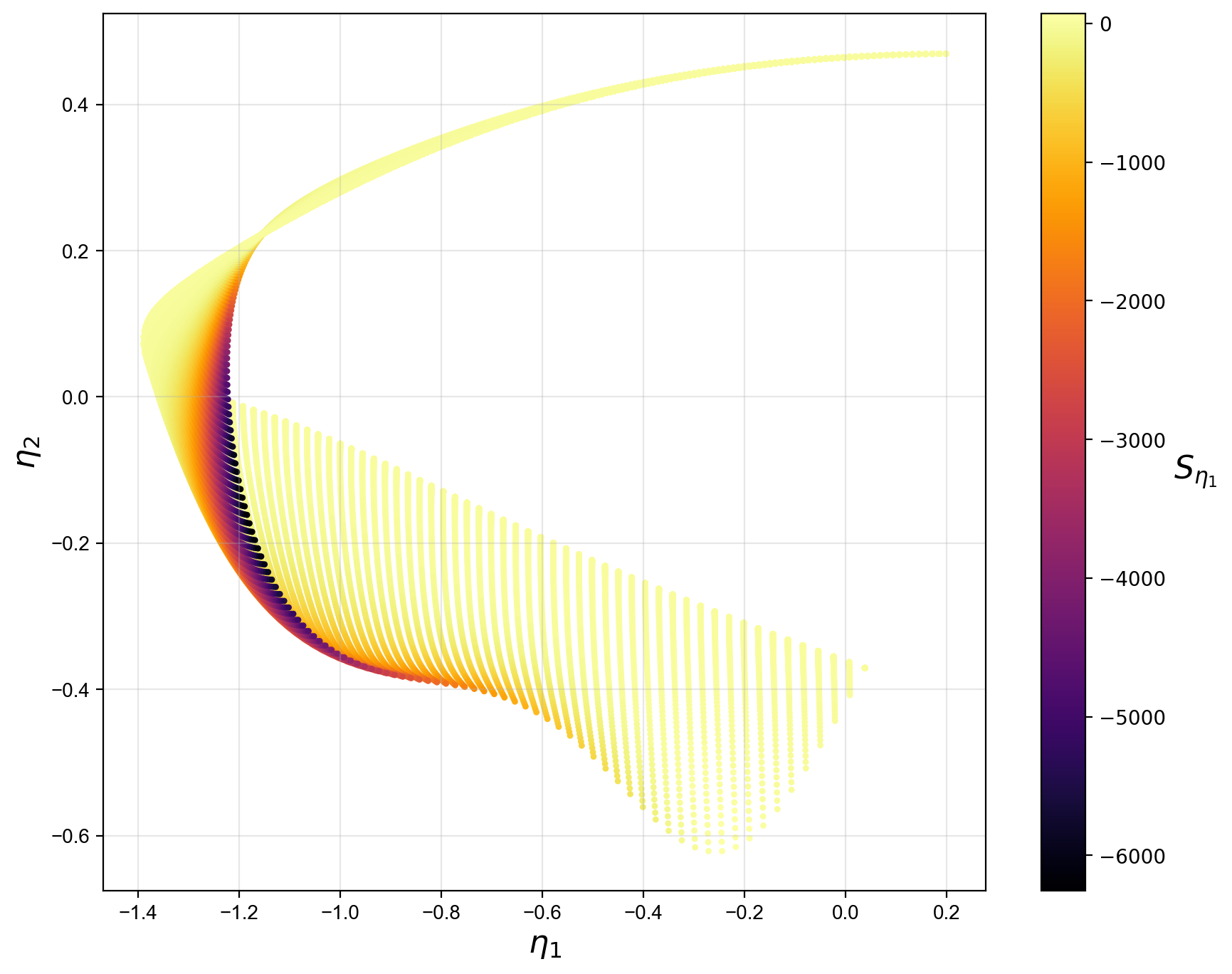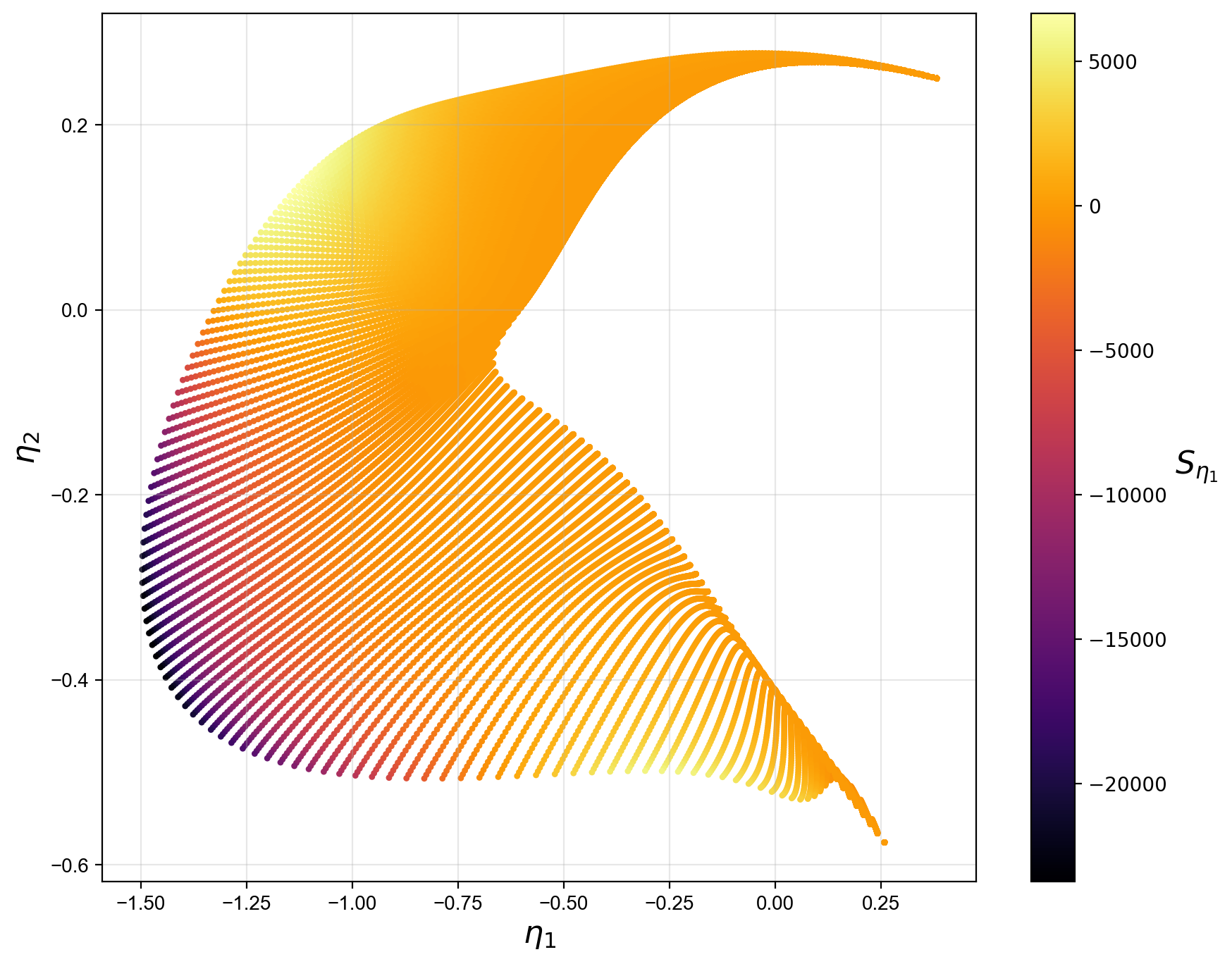Note
This tutorial was generated from a Jupyter notebook that can be accessed here.
QoI-aware encoder-decoder#
In this tutorial, we present the QoI-aware encoder-decoder dimensionality reduction strategy from the utilities module.
The QoI-aware encoder-decoder is an autoencoder-like neural network that reconstructs important quantities of interest (QoIs) at the output of a decoder. The QoIs can be set to projection-independent variables (such as the original state variables) or projection-dependent variables, whose definition changes during neural network training.
We introduce an intrusive modification to the neural network training process such that at each epoch, a low-dimensional basis matrix is computed from the current weights in the encoder. Any projection-dependent variables at the output get re-projected onto that basis.
The rationale for performing dimensionality reduction with the QoI-aware strategy is that any poor topological behaviors on a low-dimensional projection will immediately increase the loss during training. These behaviors could be non-uniqueness in representing QoIs due to overlaps on a projection, or large gradients in QoIs caused by data compression in certain regions of a projection. Thus, the QoI-aware strategy naturally promotes improved projection topologies and can be useful in reduced-order modeling.
An illustrative explanation of how the QoI-aware encoder-decoder works is presented in the figure below:

We import the necessary modules:
from PCAfold import preprocess
from PCAfold import reduction
from PCAfold import analysis
from PCAfold import utilities
import numpy as np
from tensorflow import optimizers
from tensorflow.keras import initializers
and we set some initial parameters:
save_filename = None
Upload a combustion data set#
A data set representing combustion of hydrogen in air generated from steady laminar flamelet model using Spitfire is used as a demo data set.
We begin by importing the data set composed of the original state space variables, \(\mathbf{X}\), and the corresponding source terms, \(\mathbf{S_X}\):
X = np.genfromtxt('H2-air-state-space.csv', delimiter=',')[:,0:-2]
S_X = np.genfromtxt('H2-air-state-space-sources.csv', delimiter=',')[:,0:-2]
X_names = np.genfromtxt('H2-air-state-space-names.csv', delimiter='\n', dtype=str)[0:-2]
(n_observations, n_variables) = np.shape(X)
Train the QoI-aware encoder-decoder#
We are going to generate 2D projections of the state-space:
n_components = 2
First, we are going to scale the state-space variables to a \(\langle 0, 1 \rangle\) range. This is done to help the neural network training process.
We are also going to apply an adequate scaling to the source terms. This is done for consistency in reduced-order modeling (see: Handling source terms). The scaled source terms will serve as projection-dependent variables.
(input_data, centers, scales) = preprocess.center_scale(X, scaling='0to1')
projection_dependent_outputs = S_X / scales
We create a PCA-initialization of the encoder:
pca = reduction.PCA(X, n_components=n_components, scaling='auto')
encoder_weights_init = pca.A[:,0:n_components]
We visualize the initial projection:
X_projected = np.dot(input_data, encoder_weights_init)
S_X_projected = np.dot(projection_dependent_outputs, encoder_weights_init)

We select a couple of important state variables to be used as the projection-independent variables:
selected_state_variables = [0, 2, 4, 5, 6]
First, we fix the random seed for results reproducibility:
random_seed = 100
We set several important hyper-parameters:
activation_decoder = 'tanh'
decoder_interior_architecture = (6,9)
optimizer = optimizers.legacy.Adam(learning_rate=0.001)
learning_rate = 0.001
loss = 'MSE'
batch_size = n_observations
validation_perc = 10
We are not going to hold initial weights constant, and we are going to allow the encoder to update weights at each epoch:
hold_initialization = None
hold_weights = None
We are going to train the model for 5000 epochs:
n_epochs = 5000
We instantiate an object of the QoIAwareProjection class with various parameters:
projection = utilities.QoIAwareProjection(input_data,
n_components=n_components,
optimizer=optimizer,
projection_independent_outputs=input_data[:,selected_state_variables],
projection_dependent_outputs=projection_dependent_outputs,
activation_decoder=activation_decoder,
decoder_interior_architecture=decoder_interior_architecture,
encoder_weights_init=encoder_weights_init,
decoder_weights_init=None,
decoder_kernel_initializer=initializers.GlorotUniform(seed=random_seed),
hold_initialization=hold_initialization,
hold_weights=hold_weights,
transformed_projection_dependent_outputs='signed-square-root',
transform_power=0.5,
transform_shift=10**-4,
transform_sign_shift=0,
loss=loss,
batch_size=batch_size,
n_epochs=n_epochs,
validation_perc=validation_perc,
random_seed=random_seed,
verbose=True)
Before we begin neural network training, we can print the summary of the current Keras model:
projection.summary()
QoI-aware encoder-decoder model summary...
(Model has not been trained yet)
- - - - - - - - - - - - - - - - - - - - - - - - - - - - - - - - - - - - - - - - - - - - - - - - - - - - - - - - - - - -
Projection dimensionality:
- 2D projection
- - - - - - - - - - - - - - - - - - - - - - - - - - - - - - - - - - - - - - - - - - - - - - - - - - - - - - - - - - - -
Encoder-decoder architecture:
9-2-6-9-9
- - - - - - - - - - - - - - - - - - - - - - - - - - - - - - - - - - - - - - - - - - - - - - - - - - - - - - - - - - - -
Activation functions:
(9)--linear--(2)--tanh--(6)--tanh--(9)--tanh--(9)
- - - - - - - - - - - - - - - - - - - - - - - - - - - - - - - - - - - - - - - - - - - - - - - - - - - - - - - - - - - -
Variables at the decoder output:
- 5 projection independent variables
- 2 projection dependent variables
- 2 transformed projection dependent variables using signed-square-root
- - - - - - - - - - - - - - - - - - - - - - - - - - - - - - - - - - - - - - - - - - - - - - - - - - - - - - - - - - - -
Model validation:
- Using 10% of input data as validation data
- Model will be trained on 90% of input data
- - - - - - - - - - - - - - - - - - - - - - - - - - - - - - - - - - - - - - - - - - - - - - - - - - - - - - - - - - - -
Hyperparameters:
- Batch size: 58101
- # of epochs: 5000
- Optimizer: <keras.src.optimizers.legacy.adam.Adam object at 0x7f9e0f29f310>
- Loss function: MSE
- - - - - - - - - - - - - - - - - - - - - - - - - - - - - - - - - - - - - - - - - - - - - - - - - - - - - - - - - - - -
Weights initialization in the encoder:
- User-provided custom initialization of the encoder
- - - - - - - - - - - - - - - - - - - - - - - - - - - - - - - - - - - - - - - - - - - - - - - - - - - - - - - - - - - -
Weights initialization in the decoder:
- <keras.src.initializers.initializers.GlorotUniform object at 0x7fce4ff75a50>
- - - - - - - - - - - - - - - - - - - - - - - - - - - - - - - - - - - - - - - - - - - - - - - - - - - - - - - - - - - -
Weights updates in the encoder:
- Initial weights in the encoder will change after first epoch
- Weights in the encoder will change at every epoch
- - - - - - - - - - - - - - - - - - - - - - - - - - - - - - - - - - - - - - - - - - - - - - - - - - - - - - - - - - - -
Results reproducibility:
- Reproducible neural network training will be assured using random seed: 100
= = = = = = = = = = = = = = = = = = = = = = = = = = = = = = = = = = = = = = = = = = = = = = = = = = = = = = = = = = = =
We train the current Keras model:
projection.train()
We can visualize the MSE loss computed on training and validation data during training:
projection.plot_losses(markevery=100,
figure_size=(15, 4),
save_filename=save_filename)

After training, additional information is available in the model summary:
projection.summary()
= = = = = = = = = = = = = = = = = = = = = = = = = = = = = = = = = = = = = = = = = = = = = = = = = = = = = = = = = = = =
Training results:
- Minimum training loss: 0.0016817295690998435
- Minimum training loss at epoch: 5000
- Minimum validation loss: 0.0017386721447110176
- Minimum validation loss at epoch: 5000
- - - - - - - - - - - - - - - - - - - - - - - - - - - - - - - - - - - - - - - - - - - - - - - - - - - - - - - - - - - -
We extract the best lower-dimensional basis that corresponds to the epoch with the smallest training loss:
basis = projection.get_best_basis(method='min-training-loss')
We project the original dataset onto that basis:
X_projected = np.dot(input_data, basis)
S_X_projected = np.dot(projection_dependent_outputs, basis)
We visualize the current manifold topology:
